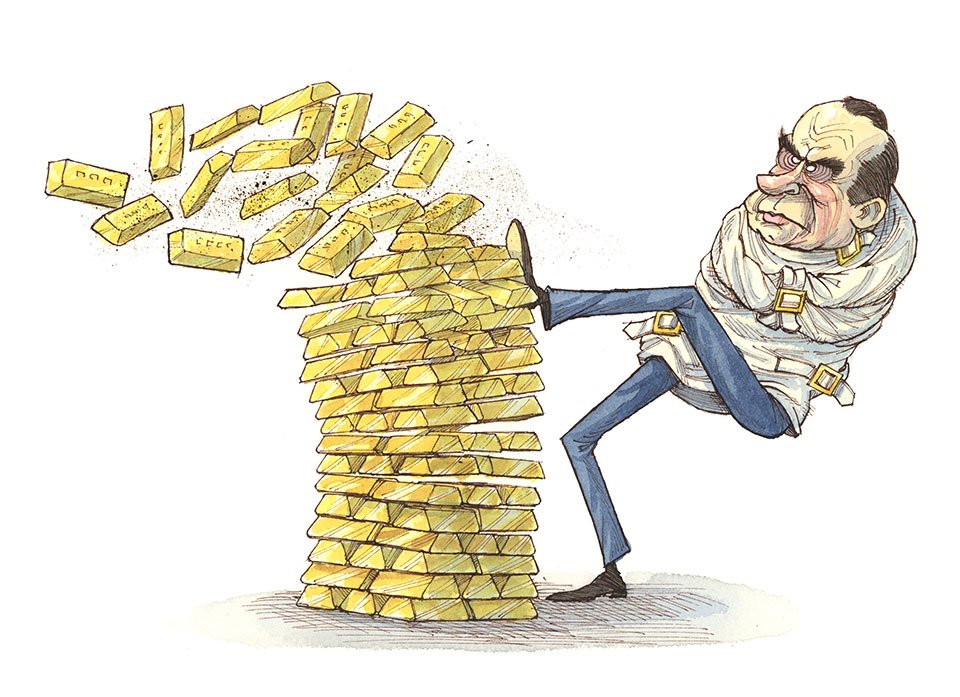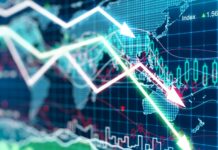United States Economy Looking Grim
The Federal Reserve is wedged in a Catch-22, while the United States economy is teetering on the edge of a nightmarish scenario. Let’s face it, the Fed has proven helpless when it comes to fighting inflation.
Although… Has anyone stopped to wonder what the term ‘inflation’ really means?
The word inflation happens to be a commonly used and cleverly disguised term for the debasement of currency. Simply put, your money has less purchasing power during times of inflation, which the West is witnessing on a grand scale. When the Fed floods a persistent and excessive amount of money supply into the economy- the end result is inflation.
But what’s the catalyst for inflation in the first place?
The answer seems obvious, but in reality, it’s a bit more complicated than the wizards in Congress or the Fed seem to grasp. The narrative of mainstream media gaslights the masses to believe inflation is caused by the corporations doubling or tripling the price of average household goods. Nearly everyday, the media seems to surface another ‘villain’ as the cause of current inflationary conditions. Likewise, most politicians bamboozle us to believe it’s the Russians or Chinese or Ukraine war that’s to blame. Rest assured, they will never hold themselves accountable. How much longer do they expect us to believe this chimera?
The real cause of inflation here in the United States points directly to 50+ years of the Federal Reserve running the printing presses 24/7. Lest we forget, paper money (fiat currency) is legal tender issued by the government that is backed by thin air. In the good ‘ol days of America- currency was backed by the hardest asset of all- gold! That was until Nixon untethered the dollar from the infamous gold standard, which was the beginning of the end of the ‘golden’ days of America.

While half a century of excess money printing may be the obvious culprit, another massive catalyst for current inflation is profound global supply chain shortages. This problem was clearly exacerbated by the Covid-19 pandemic economic shutdowns. Fast forward to Q3 2022, we see imminent shortages of not only critical commodities, diesel and natural gas but also skilled labor.
Add insult to injury, the IRS lit the match to ignite the inflationary fire by handing out over $900 billion in stimulus checks to the American public for pandemic relief. Did anyone in the federal government have the foresight to see that economic stimulus during times of economic turndown would create supply chain shortages and inflation down the road? Of course not. Instead, the government decided to keep the country on life support.
Now the Federal Reserve finds themselves scrambling to tame inflation- a little bit too late if I’m honest. Jerome Powell has unfortunately inherited decades worth of poor decision making and bad fiscal policy from his predecessors. Nonetheless, Powell still has to make a move. Except raising interest rates won’t lower inflation this time around.

Some may argue that Volker achieved the insurmountable task of getting inflation under control by increasing interest rates back in 1979, creating a deeply painful recession between 1980 – 1982. However, forty years later, the economic playing field is an entirely different ball game with a myriad of different players. That’s why rate hikes to slay inflation in this twisted economic nightmare simply won’t work.
Flooding the economy for half a century with infinitesimal amounts of worth-less fiat currency, plus economic stimulus during a period of stagflation, followed by existential global resource scarcities equates to hyperinflation.
The Negative Feedback Loop of Monetary Policy
The Fed has raised interest rates far above levels in other major economies, while turning from a buyer of long-term debt, to a seller. This amounts to historic tightening of monetary policy, which has resulted in a soaring dollar. The Euro and Yen are sitting at multi-year lows. The Yuan has also weakened but just enough to remain a highly competitive exporter. As evidence to how important resources are, the ruble, despite cuts in Russian interest rates, has been one of the few currencies to outperform the dollar.
Combined with record debt in all sectors of the United States, the current situation represents a litany of potential vicious circles that could cripple the economy. Problems in the U.S. economic landscape are dramatically amplified by even more difficult problems facing Europe. The sharp drop in the Euro, for example, makes importing critical items from the U.S. virtually unaffordable.
Recently, Europeans complained that they were buying LNG at many times the price they were paying for Russian gas. There is a constant threat of a liquidity crisis involving uncontrolled declines in U.S. bonds, and commensurate gains in yields, as foreign investors sell bonds to obtain badly needed dollars. There is also a risk of negative feedback loops that send the economy in a spiral as happened in 2008, when housing prices collapsed. And there are always problems that are not known and seem to arise out of the blue.
The Fed Is Helpless When It Comes To Fighting Inflation…
The only thing that seems ultra clear- when the Fed becomes too tight- it’s a sure ticket to a major economic catastrophe. There is a level of interest rates that will lead to uncontrolled selling of U.S. bonds, the domino effect leaching into a massive turndown in the housing market or who knows what economic anomalies could occur…
Any real attempt to bring inflation back to levels seen for most of this century is a recipe for disaster. I have often said that the current period could come to resemble the 1970’s – but on steroids. Although, in the 70’s there were specific events, the OPEC+ boycott and the war between Iran and Iraq that were ephemeral. There is nothing ephemeral about today’s shortages.
For everyone’s sake, this includes the United States along with the rest of the world, the only solution that makes sense is a change in the world’s reserve currency. A revamp of the monetary system that is backed by a hard asset to demand the kind of fiscal discipline the global economy desperately needs.
A country operating on fiat currency for over 50 years with no financial discipline is a country headed for disaster. And this has been the root cause of American devolution- the decadence from perhaps the greatest country ever- to a country without any mooring.
My guess is that a new era will not begin with a headline ‘catastrophe’ but rather sneak in under the radar… Telegraphed by a sharp rise in the price of gold. It’s not a matter of if, it’s a matter of when. Indeed, when the Fed and central banks lose control of gold, it will signal the new world order has begun.
Curious to learn more about investing in hard assets like gold and silver bullion? My latest book ‘China’s Rise and the New Age of Gold’ presents investors with the intel they need to weather the radical changes coming to the global economy. Click below for a FREE preview on Amazon Kindle & Audible!


















